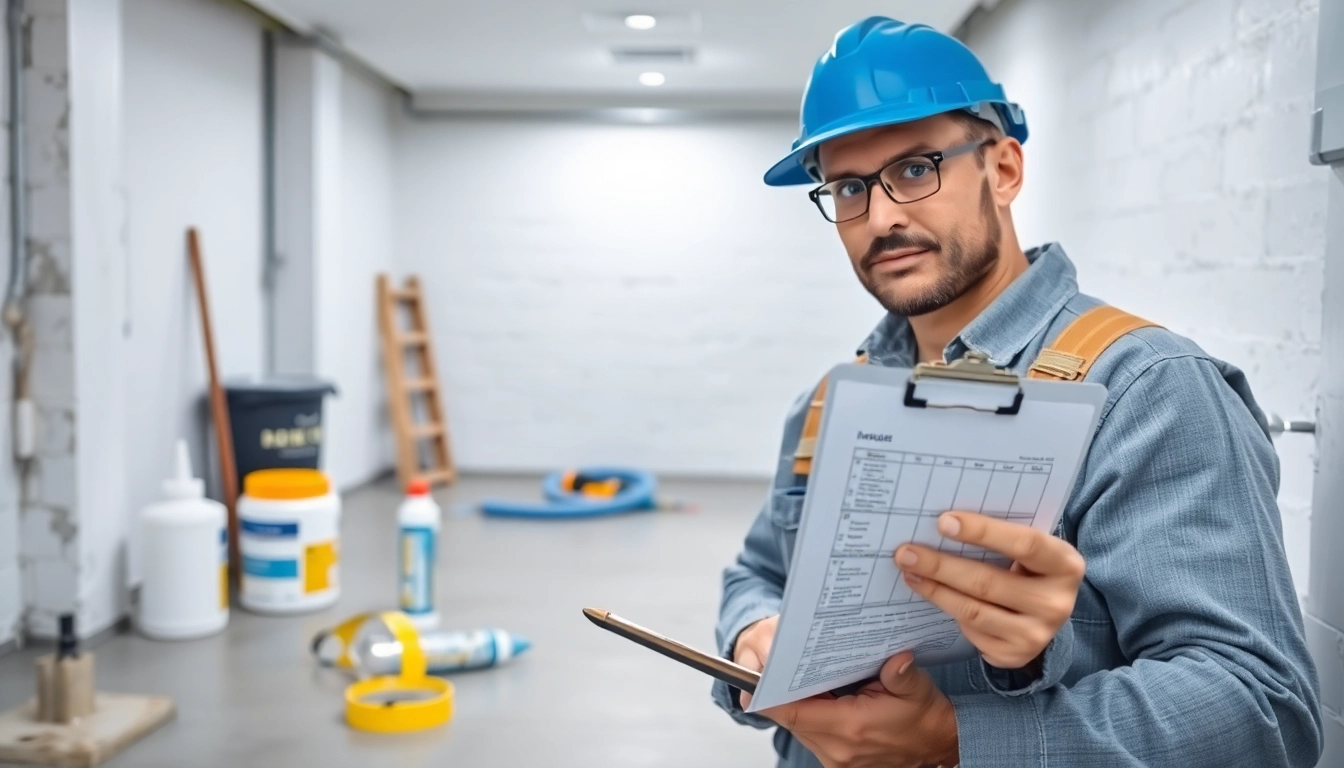Understanding Basement Waterproofing
What is Basement Waterproofing?
Basement waterproofing is the process of making a basement or cellar watertight or waterproof, preventing the infiltration of water from outside sources. This crucial practice ensures that basements remain dry, safe, and functional spaces within a home. Techniques can include the application of waterproof coatings, installation of drainage systems, and the use of sump pumps among other solutions.
Why is Waterproofing Important?
Waterproofing your basement is essential for a plethora of reasons. Firstly, it protects your home’s structural integrity by preventing water damage which can lead to significant renovations and costs. Moisture can cause wood to rot, foundations to crack, and mold to proliferate, all of which can pose health risks. Secondly, a waterproofed basement can substantially enhance the usable space in your home, improving comfort and increasing property value. Additionally, it helps maintain indoor air quality, reducing the risk of allergies and respiratory issues caused by mold spores.
Common Basement Waterproofing Techniques
There are several techniques employed in basement waterproofing, each tailored to specific situations:
- Interior Sealants: These are applied to walls to create a moisture barrier.
- Exterior Waterproofing: Involves digging around the home’s foundation to apply waterproof coatings and ensure proper drainage.
- Drainage Systems: Installing French drains or using sump pumps effectively channels water away from your basement.
- Vapor Barriers: Installing plastic sheets on walls and floors prevents moisture from penetrating through surfaces.
Signs Your Basement Needs Waterproofing
Visible Mold and Mildew
The presence of mold and mildew in your basement is one of the clearest indicators that you require waterproofing. These fungi thrive in damp, humid environments and can pose serious health risks, highlighting the importance of addressing the moisture issue promptly.
Water Stains and Dampness
Water stains on walls and floors are sure signs that your basement is suffering from water intrusion. These stains can manifest as discoloration or even peeling paint, indicating that moisture has penetrated the materials. If left unaddressed, this can lead to more severe damage.
Musty Odors and Poor Air Quality
Musty smells are often a concealed alarm of water issues in your basement. The odor is usually associated with mold growth, arising from trapped moisture and stagnant air. Improving air quality and odor can significantly enhance the livability of your home.
How to Choose a Basement Waterproofing Solution
Assessing Your Basement’s Needs
Before embarking on any waterproofing solution, it’s essential to assess the unique needs of your basement. This includes examining any visible signs of moisture, historical water damage, and the overall drainage capacity of the surrounding landscape.
Types of Waterproofing Systems
When choosing a waterproofing system, several options are available:
- Interior Waterproofing: Best suited for homes with less severe water issues.
- Exterior Waterproofing: More effective for homes prone to severe water infiltration.
- Combination Systems: These include both interior and exterior solutions to ensure maximum protection.
Evaluating Professional Services
Having a qualified professional assess your basement is often the best route. Look for certifications, ask about their previous work, and seek customer reviews. A skilled professional can provide tailored solutions that not only fix current problems but also prevent future issues.
DIY Basement Waterproofing Tips
Sealing Cracks and Gaps
A straightforward and cost-effective initial approach to waterproofing is sealing visible cracks and gaps. Homeowners can purchase sealants from hardware stores to apply these to both walls and floors. This keeps moisture from infiltrating and can be a temporary solution while seeking professional help.
Installing Drainage Solutions
For those comfortable with a DIY approach, installing simple drainage solutions can significantly improve water management. Utilizing gutter extensions or installing a French drain system can divert water away from the foundation and help manage excess moisture around the basement.
Maintenance Tips for Long-Term Effectiveness
Long-term success in basement waterproofing comes down to maintenance. Regularly inspect and clear any drains, ensure gutters are free from blockages, and replace any sealants as necessary. Keeping an eye on humidity levels with a dehumidifier can also offset potential water issues.
Cost Considerations for Basement Waterproofing
Factors Influencing Waterproofing Costs
The cost of waterproofing can vary significantly based on several factors, including the size of the basement, the severity of the water issues, and the types of materials and techniques chosen. On average, homeowners may expect costs to range from a few hundred dollars for basic sealants to several thousand for comprehensive systems.
Budgeting for Unexpected Repairs
While budgeting for waterproofing, it is wise to consider unexpected expenses. Water damage can often reveal deeper issues that require additional repairs, such as structural reinforcements or mold remediation. Setting aside reserve funds can help alleviate financial stress should these situations arise.
Potential Savings from Prevention
Investing in basement waterproofing saves homeowners money in the long run. By preventing structural damage, reducing energy costs due to improved insulation, and avoiding health issues related to mold exposure, the initial investment pays dividends well into the future. For those searching for effective solutions online, searching for basement waterproofing near me geneva ensures that you find the right professionals who can provide tailored solutions.
